As you know, a great many vegetables are eaten in cooking in Japan. In particular, many of the ingredients in traditional Japanese cuisine are vegetables. Before the pre-modern era, Japan’s food culture was primarily vegetarian. This trend in food culture was common in the upper class, which was strongly influenced by Buddhist teachings forbidding meat eating. Not only them, but the general population’s dietary lifestyle also seems to have been basically the same, although there were some regional differences. For these reasons, vegetables naturally had become the main ingredients used in Japanese cuisine. However… To tell the truth, the many of vegetables used in Japanese cuisine are not native to Japan. This is not only true for vegetables that are commonly consumed today. Most of the vegetables used in what was known as traditional Japanese cuisine also originate from overseas. Most of them were brought to Japan through trade after the period when rice cultivation was brought from the continent, and later, they were gradually cultivated in Japan. And over the years, the breed has been improved and has continued to the present day. Traditional local brand-name vegetables such as “Kyo yasai(Kyoto vegetables)” or “Kaga yasai(Kaga vegetables)” are not originally from Japan. It’s quite a surprise, don’t you think? Below are some of the few vegetables native to Japan that are typical of the Japanese market. We would like to refer you to these when your trying Japanese cuisine in Japan. (*”▽”)∩
Mitsuba
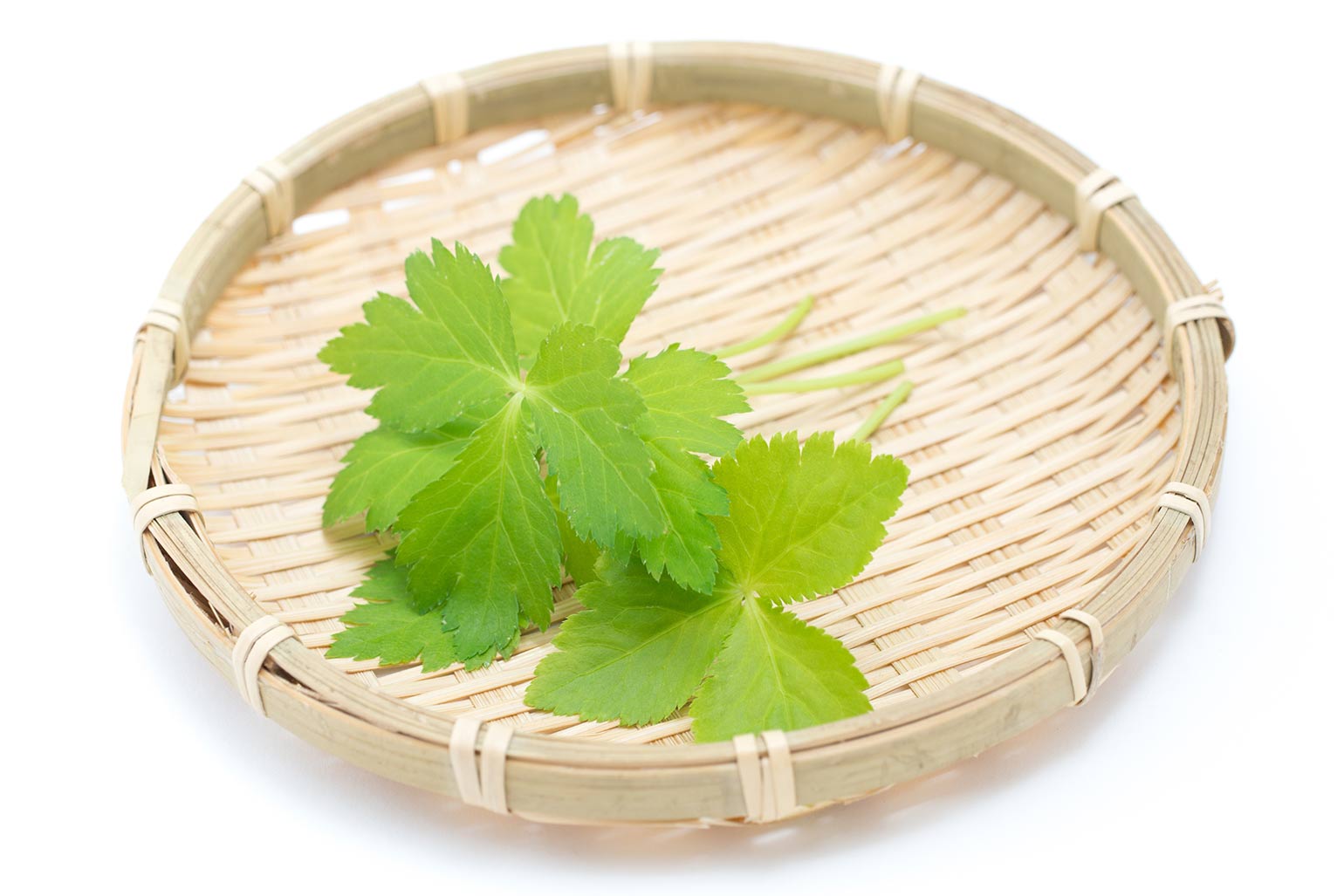
A perennial herb of the Apiaceae family, it is characterized by its three-parted leaves, as its name implies. (※”Mitsuba” means “three leaves” in Japan) It has a distinctive aroma, as it is called a Japanese herb. It is often used as an ingredient in soups and rice bowls, as well as in boiled and dressed dishes. We are sure several of you have seen those green leaf-like things that are put on Katsudon (pork cutlet bowl) or Oyakodon (chicken and egg bowl). That leaf is mitsuba.
Seri
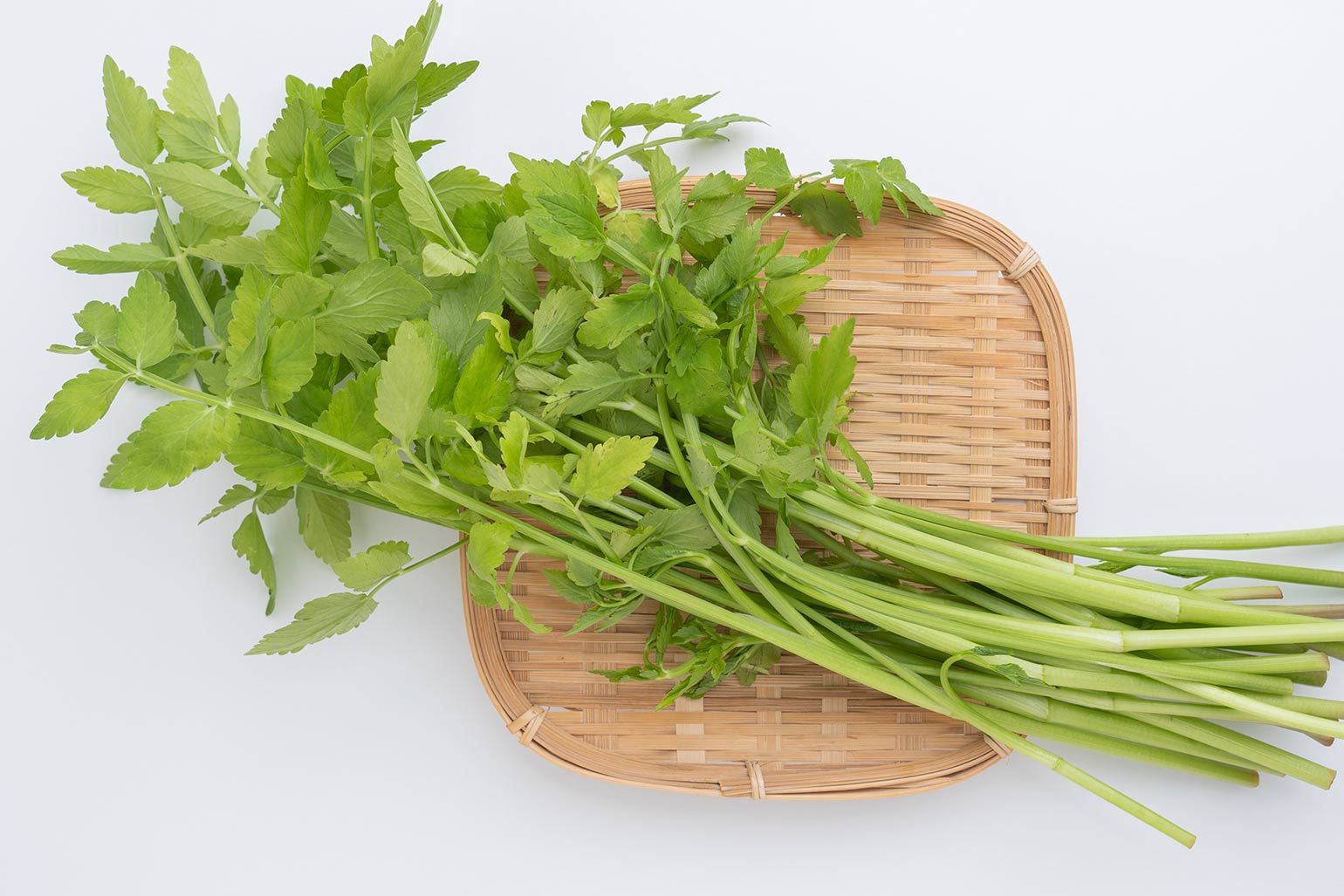
It’s a perennial herb of the the Apiaceae family, well known as one of the “seven spring flowers” in Japan. Seri is often eaten boiled or dressed, and has also been used as an ingredient in pot dishes. It has freshly bitter and pleasantly crunchy.
Fuki
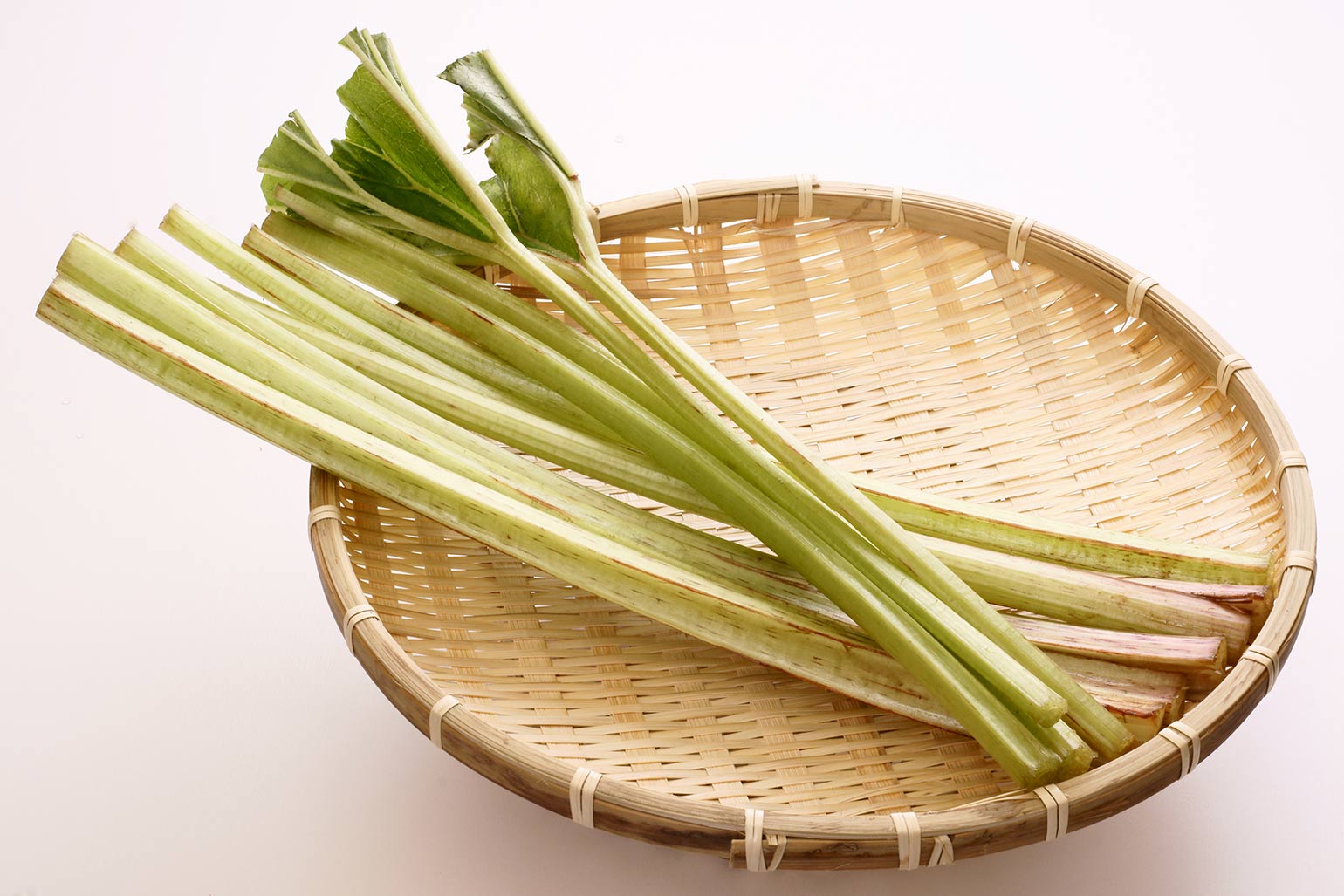
It is a perennial member of the Asteraceae family. Its buds are called “fukinoto (butterbur sprouts)” and are known as a seasonal spring vegetable. Fukinoto are mainly eaten as tempura or dressed. Leaves and stems are often cooked in stewed or stir-fried dishes after removing the acridity.
Myoga
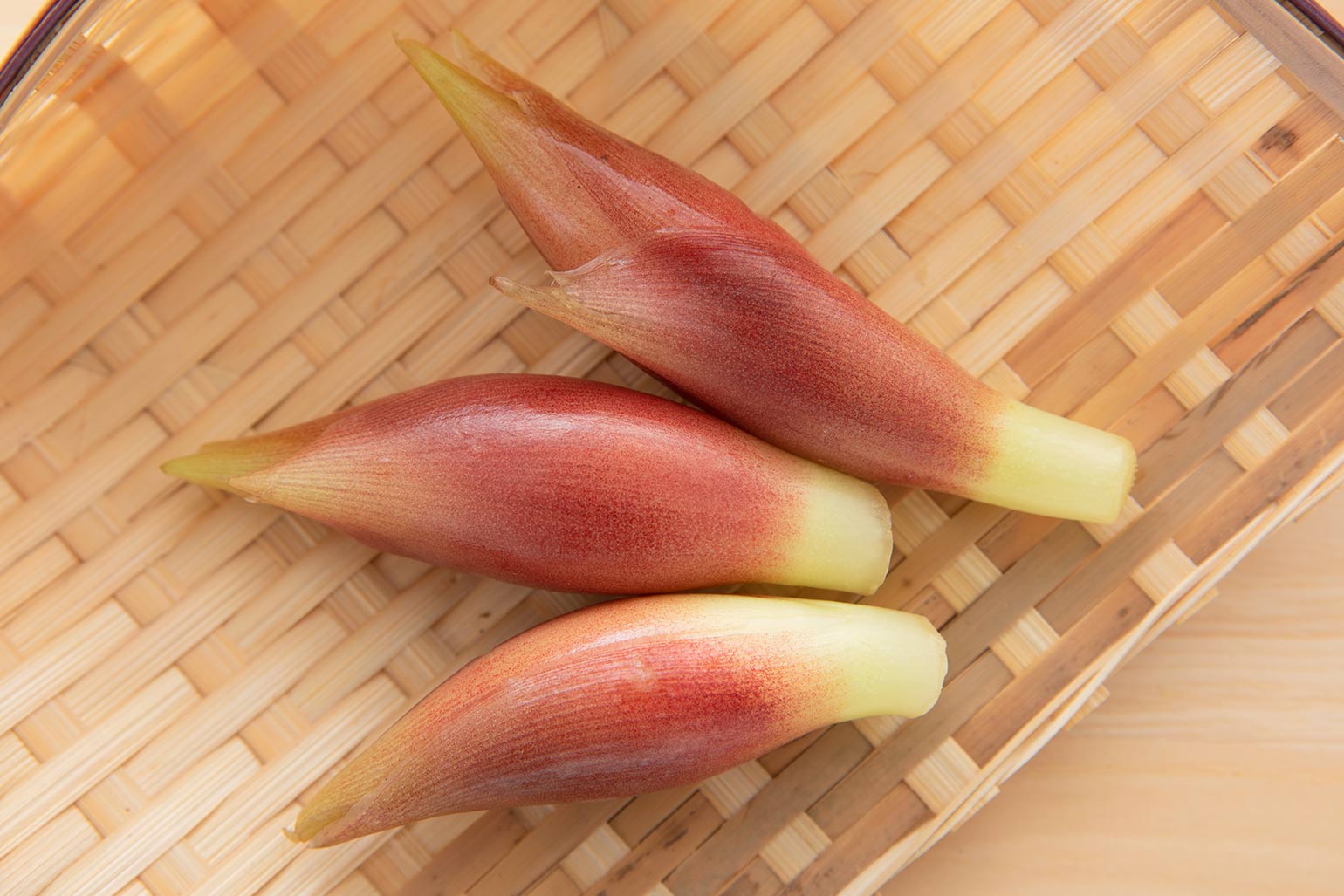
Myoga is a perennial herb belonging to the ginger family. It is well known as a condiment for soba or udon noodles. It is also tasty cooked in tempura or as a salad. Myoga has a very distinctive sweet and bitter flavor. There is even an anecdote that its aroma has the mysterious power to make people lose their memories.
Wasabi
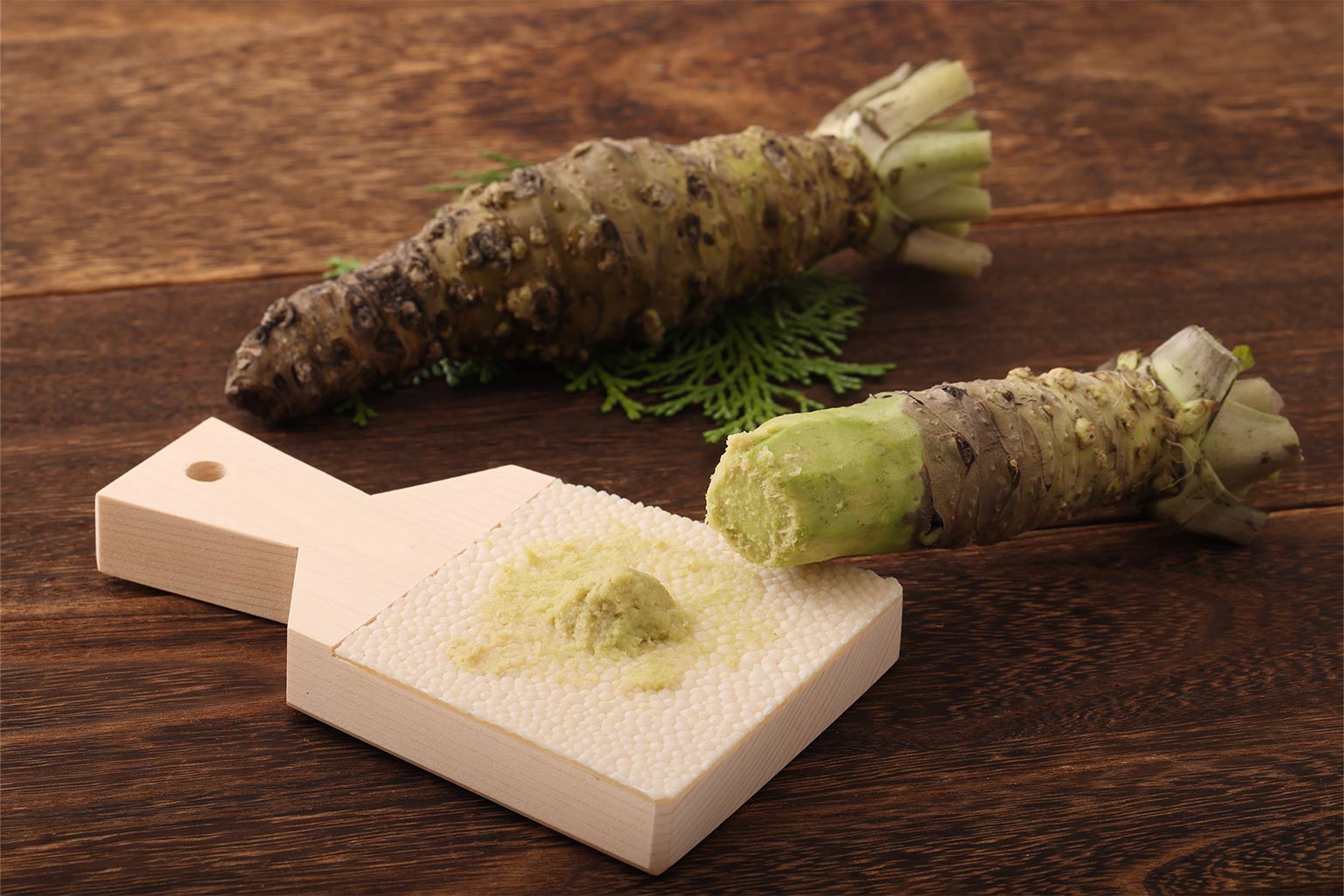
A perennial herb belonging to the Brassicaceae family, it is one of Japan’s most popular condiments and is well known to people overseas. The grated underground stem is often used in sushi and sashimi, as well as soba and udon noodles. Incidentally, the leaves and stems are also edible. It is called “wasabi-na”. It has not pungent and is cooked in boiled or stir-fried dishes. This one has a clean bitter taste and flavor.
Udo
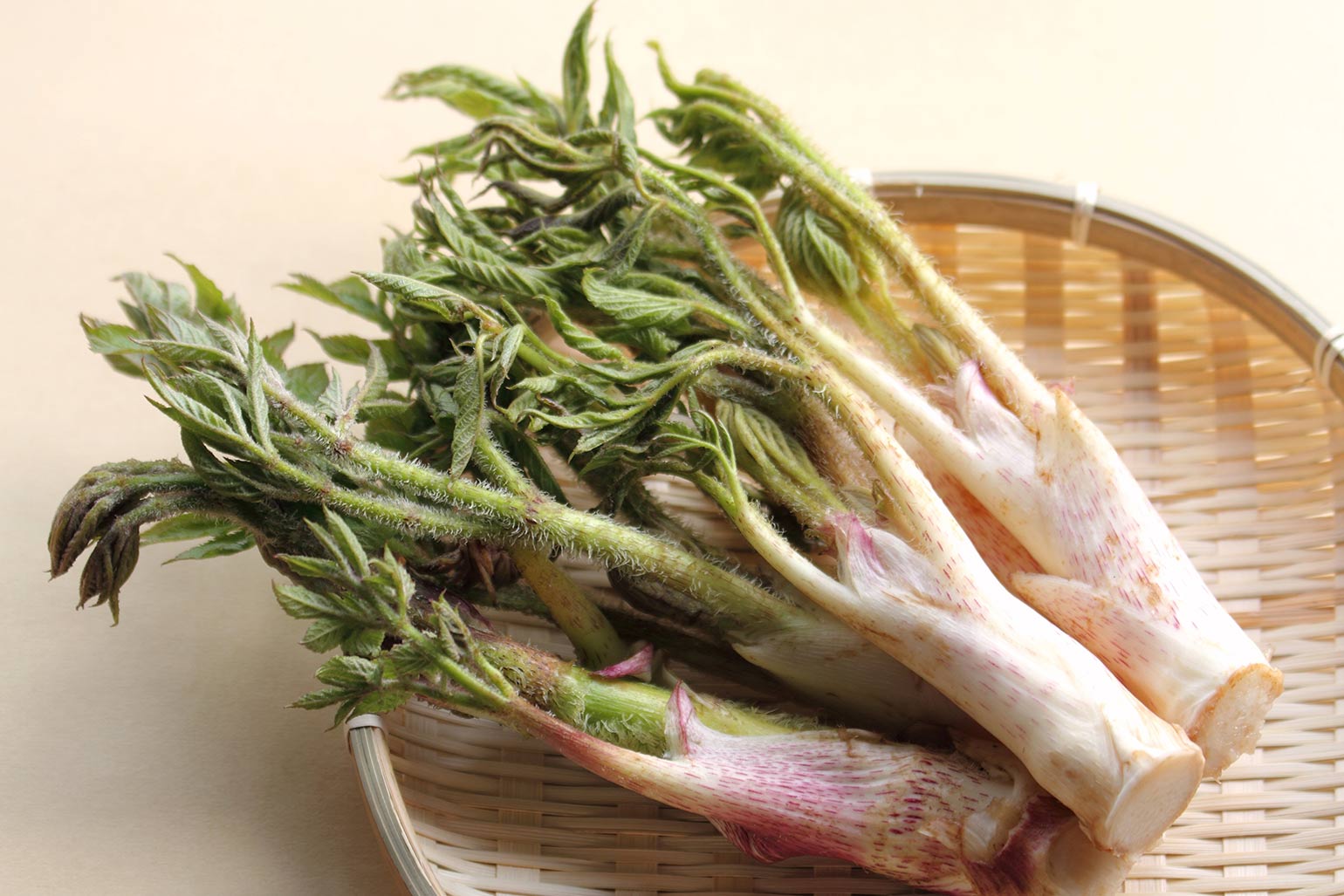
One of Japan’s representative wild plants, it is a perennial herbaceous plant belonging to the family Araliaceae and the genus Taranoki. Tender young shoots are eaten in tempura or as a salad. It’s so delicious.
Yamaimo
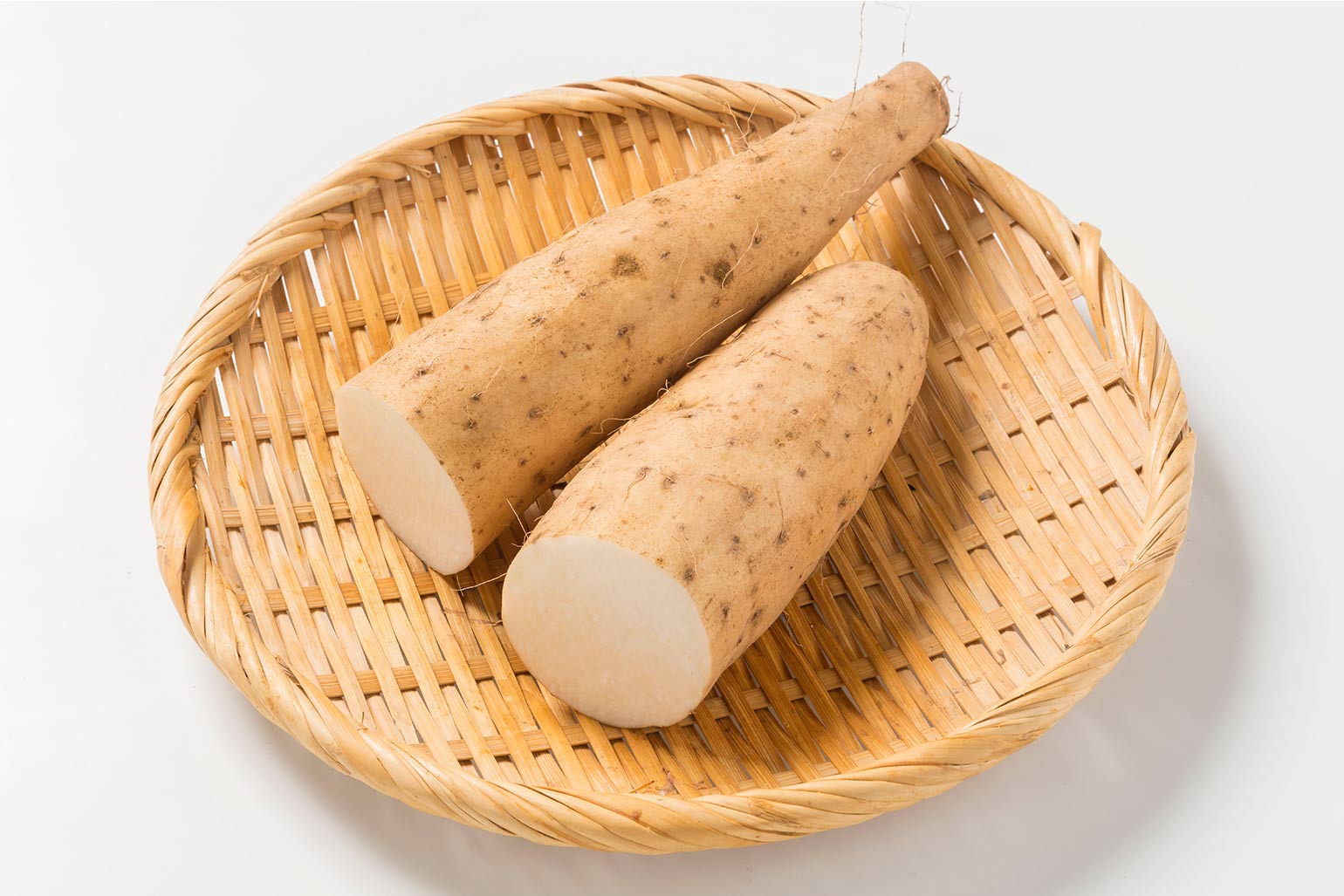
Yamaimo is a perennial plant belonging to the family of Dioscoreaceae. (※It is also called “Jinenjyo”.) It is often eaten grated, and the dish is called “Tororo”. It is also used as an ingredient in tempura and soup, and shredded and prepared as a salad. Used as an ingredient in “Wagashi (Japanese sweets)”, it is characterized by its extremely strong stickiness.
Shiitake mushroom
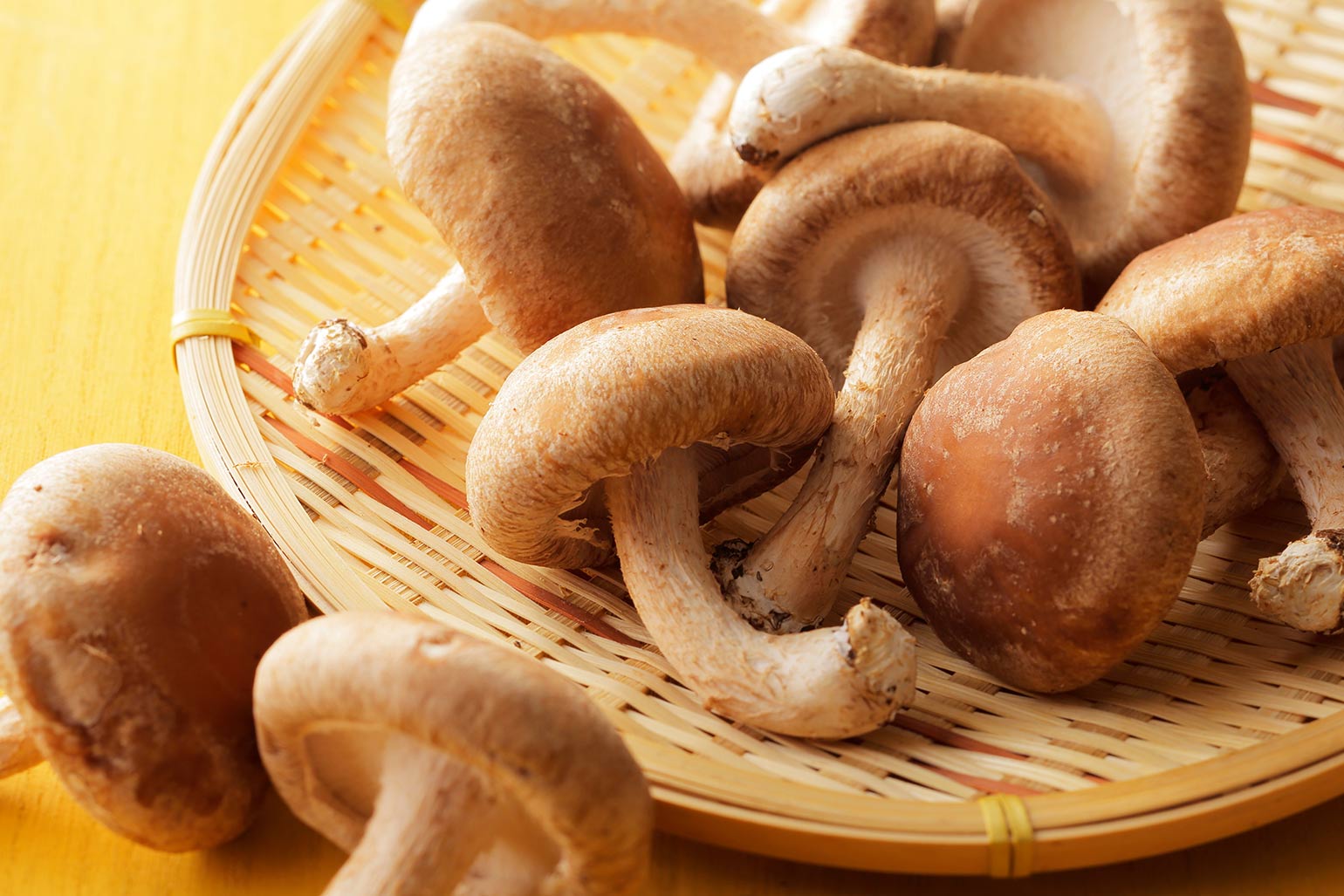
Shiitake mushrooms are the most common edible mushrooms in Japan. Besides shiitake mushrooms, other mushrooms commonly eaten in Japan include enokidake mushrooms. These mushrooms have been eaten for quite some time. Before the 20th century, we had got them in the wild. After those controllable ways of artificial cultivation were realized, though, we have beeb able to distribute them to the public. Most of the shiitake mushrooms commonly consumed today are artificially cultivated ones originally from the continent. Shiitake mushrooms are indispensable in Japanese cuisine as an ingredient for “dashi(soup stock)”. The dashi has been used in all kinds of dishes, including cooked rice, noodles, and soups. They are also often used as an ingredient in stews and one-pot dishes.



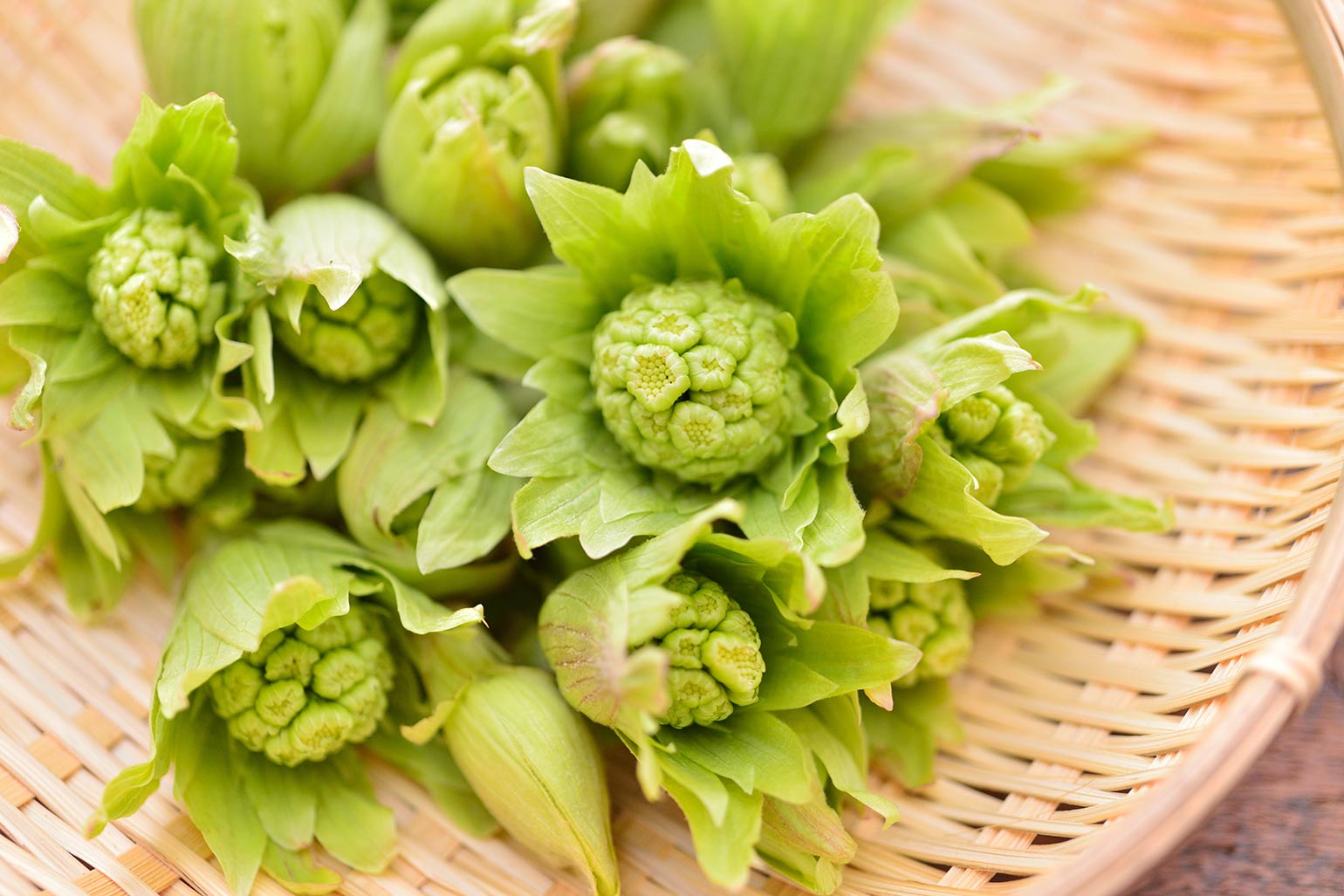

_001.png)
_002.png)
_003.png)
_004.png)
_005.png)
_006.png)
_007.png)
